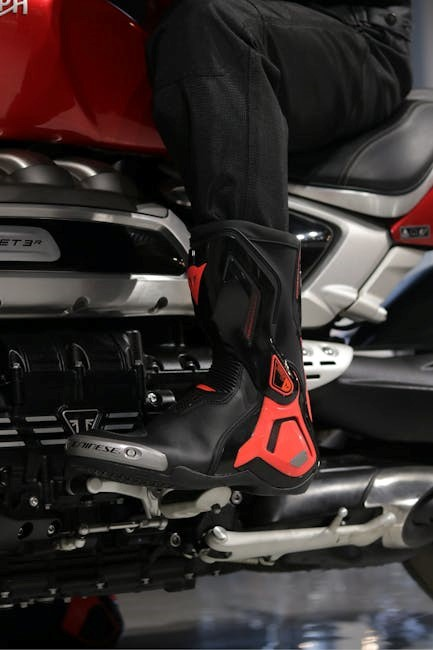
The BC Active Transportation Design Guide provides comprehensive planning and engineering guidelines for creating safe, accessible, and sustainable transportation infrastructure across British Columbia.
It supports design professionals, engineers, and planners in developing pedestrian, cycling, and multi-use facilities that enhance community health and environmental sustainability.
Purpose and Scope of the Design Guide
The BC Active Transportation Design Guide aims to promote walking, cycling, and rolling by providing evidence-based planning and engineering recommendations. Its scope includes designing pedestrian, cycling, and multi-use facilities, ensuring accessibility and safety for all users. The guide addresses intersections, amenities, and integration with transit-oriented development, offering best practices for universal design and sustainability. It serves as a resource for professionals, governments, and communities to create consistent and inclusive active transportation networks across British Columbia.
Target Audience and Stakeholders
The BC Active Transportation Design Guide is primarily intended for design professionals, including engineers, planners, and landscape architects. It also serves as a valuable resource for elected officials, community groups, and the general public. Stakeholders include municipalities, provincial agencies, and advocacy organizations involved in transportation planning and infrastructure development. The guide supports decision-makers in creating safe, accessible, and sustainable active transportation networks that benefit all users across British Columbia.
Key Benefits of Implementing the Guide
Implementing the BC Active Transportation Design Guide promotes safe, accessible, and sustainable transportation infrastructure. It supports healthy communities by encouraging walking, cycling, and rolling. The guide ensures consistency in design practices, aligning with provincial and international standards. It also fosters environmental sustainability and enhances user experiences through well-designed facilities. By following the guide, communities can improve safety, reduce traffic congestion, and create inclusive spaces that support diverse mobility needs, contributing to British Columbia’s broader transportation and health goals.
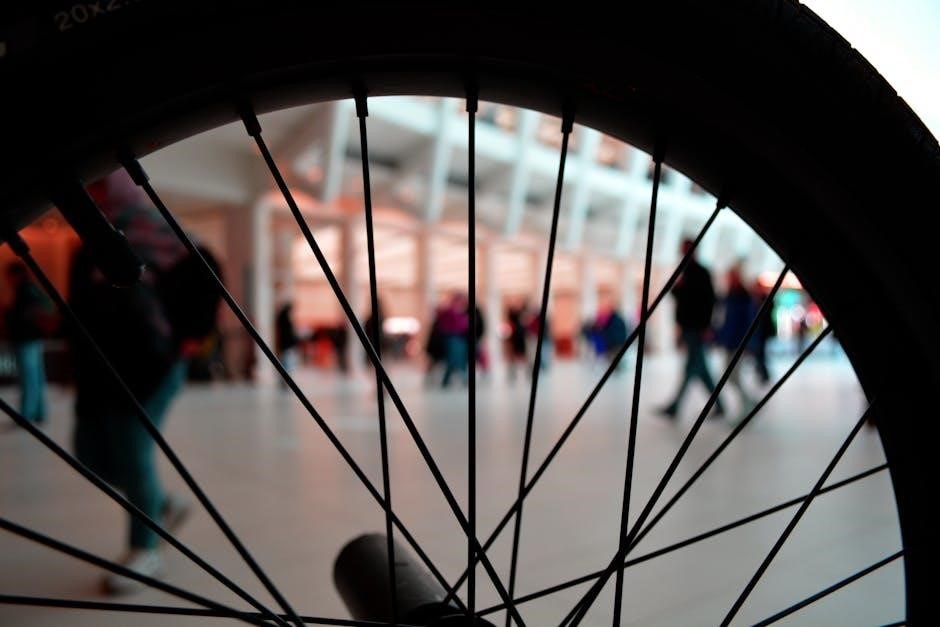
Key Principles of Active Transportation Design
Universal accessibility, safety, and sustainability form the core principles of active transportation design in British Columbia, ensuring equitable and environmentally friendly infrastructure for all users.
Universal Design and Accessibility
Universal design ensures equitable access to active transportation infrastructure for all users, regardless of age, ability, or mobility. The BC Active Transportation Design Guide emphasizes inclusive design principles, such as barrier-free pathways, audible signals, and tactile markings, to create accessible environments for pedestrians, cyclists, and those using assistive devices. These features promote independence, safety, and confidence for diverse user groups, aligning with broader accessibility standards and fostering inclusive communities.
- Accessible pedestrian crossings with clear wayfinding.
- Consistent and intuitive design elements.
- Physical and cognitive accessibility considerations.
Sustainability and Environmental Considerations
The BC Active Transportation Design Guide prioritizes sustainability by integrating green infrastructure and minimizing environmental impacts. It promotes the use of durable, low-maintenance materials and designs that reduce carbon emissions. The guide encourages aligning active transportation projects with broader climate goals and environmental policies. By fostering eco-friendly designs, it supports biodiversity and enhances natural systems while creating resilient infrastructure for future generations.
- Minimizing environmental impacts through thoughtful design.
- Promoting green spaces and natural systems integration.
- Using sustainable materials and practices.
Safety and Collision Prevention
The BC Active Transportation Design Guide emphasizes safety through evidence-based design principles to reduce collisions and enhance user protection. It promotes strategies like clear visibility, traffic calming measures, and conflict-free intersections. The guide integrates Vision Zero principles to prioritize pedestrian and cyclist safety, ensuring infrastructure designs minimize risks and protect vulnerable road users. By focusing on collision prevention, the guide supports the creation of safer, more resilient transportation networks for all.
- Clear visibility and conflict-free intersections.
- Traffic calming measures to reduce speeds.
- Protected infrastructure for vulnerable users.

Pedestrian Facilities and Infrastructure
Pedestrian facilities in the BC guide emphasize walkability, accessibility, and connectivity, ensuring safe and inclusive spaces for all users through thoughtful urban design;
- Prioritizing pedestrian-only zones and crossings.
- Enhancing wayfinding and signage for clarity.
- Incorporating amenities like seating and lighting.
Designing Pedestrian-Friendly Roadways
Designing pedestrian-friendly roadways involves creating accessible, safe, and inviting spaces that prioritize walking. The guide emphasizes universal design principles, ensuring infrastructure is usable by all ages and abilities. Key elements include traffic calming measures, such as narrowed traffic lanes and pedestrian-priority signals, to reduce vehicle speeds. Landscaping, lighting, and wayfinding are integrated to enhance user experience. These designs aim to foster vibrant public spaces, connecting pedestrians to transit, schools, and local businesses while promoting safety and inclusivity.
Accessible Pedestrian Signals and Crossings
Accessible pedestrian signals and crossings are critical for ensuring safe and equitable access for all users. The guide recommends audible signals, tactile pathways, and clear visual cues to assist individuals with disabilities. Crossings should include wide, unobstructed pathways and sufficient crossing times. These designs align with universal accessibility principles, ensuring that everyone, regardless of ability, can navigate safely and confidently. Proper implementation of these features enhances overall pedestrian safety and promotes inclusive transportation networks.
Urban Design Elements for Walkable Communities
Urban design elements play a crucial role in creating walkable communities by fostering a safe, inviting, and connected environment. The guide emphasizes mixed-use development, tree planting, and public art to enhance street vibrancy and safety. These elements encourage social interaction and active lifestyles while supporting local businesses and community engagement.
Key features include wide sidewalks, street furniture, and pedestrian-scale lighting to ensure comfort and accessibility. These design principles promote walking as a preferred mode of transportation, contributing to healthier and more sustainable communities.

Cycling Infrastructure and Facilities
The guide provides detailed design standards for cycling infrastructure, including bike lanes, paths, and storage solutions, ensuring safe and sustainable facilities for cyclists of all ages.
Types of Bicycle Facilities and Their Applications
The BC Active Transportation Design Guide outlines various bicycle facilities, such as protected bike lanes, shared pathways, and multi-use trails, tailored for different urban and rural contexts.
Each facility type is designed to accommodate cyclists of all ages and abilities, ensuring safety and accessibility while promoting sustainable transportation options.
Protected bike lanes are recommended for high-traffic areas, while shared pathways are ideal for mixed-use environments, providing clear separation from vehicular traffic and enhancing overall cycling experiences.
Protected Bike Lanes and Their Benefits
Protected bike lanes are physically separated from vehicular traffic, enhancing cyclist safety and reducing collisions. These lanes use barriers, bollards, or curbs to create a protective buffer, making cycling more appealing to all ages and abilities. They are particularly effective in high-traffic areas, promoting a low-stress cycling environment.
By prioritizing cyclist safety, protected bike lanes encourage increased ridership, reduce conflicts with motorists, and contribute to a healthier, more sustainable transportation network. They also support environmental goals by reducing reliance on cars and fostering active transportation.
Bicycle Parking and Storage Solutions
Bicycle parking and storage solutions are essential for encouraging cycling as a viable transportation option. The BC Active Transportation Design Guide recommends secure, accessible, and well-designed facilities to accommodate bicycles, ensuring they are protected from theft and weather damage.
Design features include high-capacity racks, shelters, and charging stations for e-bikes. These solutions support cyclists by providing convenient storage options, fostering a culture of active transportation and reducing reliance on motorized vehicles.
Multi-Use Paths and Shared Facilities
Multi-use paths and shared facilities are designed to accommodate cyclists, pedestrians, and users of mobility aids, promoting safe and efficient shared spaces for all users.
These pathways emphasize accessibility, universal design, and clear wayfinding to ensure seamless integration into active transportation networks while minimizing conflicts between different user groups.
Designing Shared Pathways for Mixed Use
Shared pathways are designed to safely accommodate cyclists, pedestrians, and users of mobility aids, ensuring universal accessibility and minimizing conflicts between different user groups.
Design elements include clear wayfinding, visible pavement markings, and adequate widths to support mixed use while maintaining smooth traffic flow. These pathways integrate seamlessly with public transit and key destinations, reflecting local community needs and promoting sustainable transportation options.
Wayfinding and Signage for Multi-Use Paths
Effective wayfinding and signage are critical for guiding users along multi-use paths, ensuring clarity and ease of navigation. The guide recommends consistent signage design, including directional arrows, distance markers, and map displays, to minimize confusion. Visibility and accessibility are prioritized, with signs placed at key decision points and designed to meet universal accessibility standards. This ensures all users, including those with disabilities, can navigate the network confidently. Signage should also integrate with local transit and community landmarks for seamless connectivity.
Managing Conflicts Between User Groups
Managing conflicts between user groups on multi-use paths requires careful design and clear communication. The guide emphasizes the importance of separating pedestrian, cycling, and other users where possible, while also providing shared spaces with clear markings and traffic control. Educational signage and user etiquette campaigns can help reduce conflicts. Design elements such as priority zones, speed limits, and visibility improvements are recommended to ensure harmonious use by all groups, fostering a safe and inclusive environment for everyone. This approach supports the guide’s goal of promoting accessibility and safety for all users.

Design Elements for Crossings and Intersections
The guide outlines design elements for crossings and intersections, focusing on accessibility, safety, and universal design principles to accommodate all users effectively.
Designing Safe and Accessible Crosswalks
The BC Active Transportation Design Guide emphasizes the importance of designing crosswalks with high visibility, clear markings, and accessible features for all users, including pedestrians with disabilities. Key considerations include adequate crossing times, curb ramps, and detectable warning surfaces to ensure universal accessibility. The guide also recommends standardized designs across jurisdictions to maintain consistency and enhance user confidence. These principles aim to create safer, more inclusive crossings that prioritize pedestrian safety and convenience.
Protected Intersections for Cyclists and Pedestrians
Protected intersections in the BC Active Transportation Design Guide prioritize cyclist and pedestrian safety by incorporating physical barriers, curb extensions, and clear visibility measures. These designs minimize conflicts between users and vehicles, ensuring a safer environment for all. Signal phasing and dedicated turning lanes further enhance safety and efficiency. The guide advocates for these features to reduce collisions and create more accessible, sustainable transportation networks across British Columbia.
Signal Timing and Traffic Management
The BC Active Transportation Design Guide emphasizes signal timing and traffic management strategies to enhance safety and efficiency for cyclists and pedestrians. Dedicated signal phases for cyclists and pedestrians reduce conflicts with motorized traffic. Real-time data integration optimizes traffic flow, ensuring smooth transitions between modes. These strategies prioritize active transportation while maintaining overall network efficiency, fostering a balanced and sustainable transportation system across British Columbia.
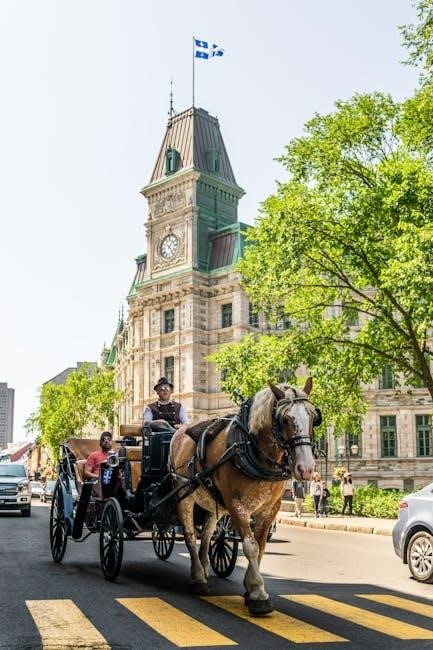
Amenities and Supportive Infrastructure
Lighting, seating, shelters, and public art enhance pedestrian and cyclist comfort, while integrated amenities like wayfinding signage and waste bins improve accessibility and community engagement.
Lighting and Visibility in Active Transportation Corridors
Lighting is essential for enhancing safety and visibility in active transportation corridors, particularly at intersections, crosswalks, and multi-use paths. The guide recommends energy-efficient LED lighting solutions to ensure consistent illumination, promoting 24/7 usability. Proper lighting design also supports wayfinding and deters crime, creating more welcoming environments for pedestrians and cyclists. Visibility enhancements, such as reflective materials and clear signage, further improve safety and accessibility, aligning with the guide’s focus on universal design and sustainability.
Seating, Shelters, and Other Pedestrian Amenities
Seating, shelters, and other pedestrian amenities are crucial for creating comfortable and inclusive active transportation corridors. The guide recommends installing benches, rest areas, and weather-protected shelters to support pedestrians, especially older adults, people with disabilities, and families. These amenities should be strategically placed at intersections, transit stops, and along high-use pathways. Durable, low-maintenance materials are suggested to ensure longevity and accessibility. Additionally, integrating green infrastructure, such as planters, enhances both functionality and aesthetic appeal, fostering a sense of community and encouraging longer walks. Universal design principles ensure these amenities are usable by all, promoting equity and comfort for diverse user needs.
Integration of Public Art and Community Engagement
The BC Active Transportation Design Guide emphasizes the importance of integrating public art and fostering community engagement to enhance the aesthetic and cultural value of active transportation infrastructure. Public art installations can contribute to a sense of place and identity, making corridors more inviting and memorable. The guide encourages collaboration with local artists and communities to ensure designs reflect regional character. Community engagement processes, such as public consultations and participatory design workshops, ensure that infrastructure aligns with local needs and priorities, fostering a sense of ownership and pride among residents.
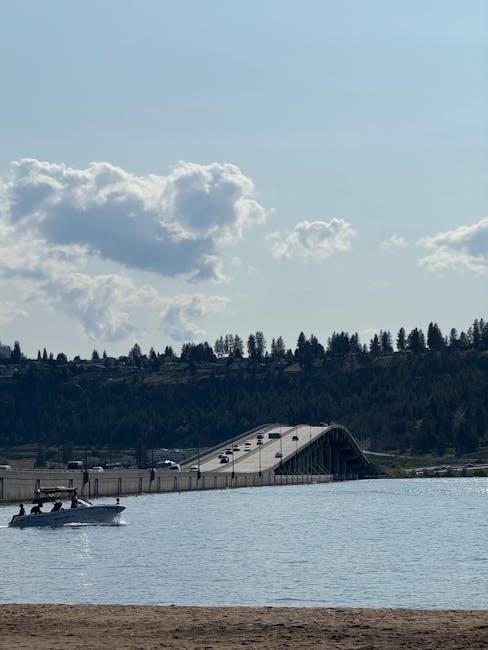
Implementation and Maintenance Strategies
The guide outlines phased implementation plans, pilot projects, and best practices for maintaining active transportation infrastructure, ensuring long-term safety, functionality, and community engagement.
Phased Implementation and Pilot Projects
The guide recommends a phased approach to implementing active transportation infrastructure, allowing communities to test designs, gather feedback, and adapt before full-scale rollout. Pilot projects enable the evaluation of new facilities, such as protected bike lanes or multi-use paths, to ensure they meet user needs and safety standards. This iterative process supports incremental improvements, fostering community engagement and adaptive management. Updates to the guide, such as transit-oriented development supplements, further enhance implementation strategies.
Maintenance Best Practices for Active Transportation Infrastructure
The guide emphasizes regular maintenance to ensure durability and safety of active transportation facilities. This includes routine inspections, timely repairs, and seasonal maintenance such as snow removal and debris clearing. Clear guidelines are provided for maintaining cycling infrastructure, pedestrian pathways, and multi-use trails. Integrating feedback from users and monitoring performance help optimize maintenance strategies, ensuring reliable and accessible infrastructure for all users. These practices are essential for sustaining the functionality and longevity of active transportation networks in British Columbia.
Monitoring and Evaluation of Facility Performance
The guide outlines methods for monitoring and evaluating the performance of active transportation facilities to ensure they meet safety, accessibility, and usability standards. Data collection techniques, such as usage counts and user feedback, help assess facility effectiveness. Regular performance reviews identify areas for improvement and inform future design enhancements. This process supports continuous improvement, ensuring infrastructure aligns with community needs and provincial active transportation goals. Effective monitoring and evaluation are critical for optimizing the long-term success of these facilities.

Case Studies and Success Stories
The guide highlights notable projects in British Columbia, such as the Stewardson Gap in the BC Parkway, showcasing successful implementations of active transportation infrastructure. These examples demonstrate how aligning design principles with community needs leads to improved safety, accessibility, and usability, inspiring future projects and fostering sustainable transportation solutions across the province.
Notable Projects in British Columbia
The Stewardson Gap in the BC Parkway and the 6th Street Active Transportation Bridge are standout examples of successful active transportation projects in British Columbia. These initiatives demonstrate the effective implementation of the Design Guide’s principles, enhancing safety, accessibility, and connectivity for pedestrians, cyclists, and other users. They reflect the integration of public transit, community engagement, and sustainable design, showcasing how well-planned infrastructure can transform communities and promote active lifestyles across the province.
Lessons Learned from Successful Implementations
Successful implementations highlight the importance of community engagement, phased project delivery, and integrating universal design principles. Collaboration between stakeholders ensures facilities meet diverse user needs. Phased implementation allows for adaptive planning and testing, enhancing long-term effectiveness. Continuous monitoring and feedback mechanisms have proven crucial for identifying improvements and ensuring infrastructure remains safe and accessible. These lessons underscore the value of iterative design and stakeholder involvement in achieving sustainable and equitable active transportation solutions across British Columbia.
Community Engagement and Feedback Mechanisms
Effective community engagement is vital for ensuring active transportation infrastructure meets local needs. Public surveys, workshops, and stakeholder consultations are key tools for gathering feedback. These mechanisms help identify priorities, address concerns, and build support for projects. Feedback is integrated into design and policy decisions, fostering inclusive and equitable solutions. Transparent communication channels ensure ongoing dialogue, enabling continuous improvement of active transportation facilities and aligning them with community goals and expectations across British Columbia.
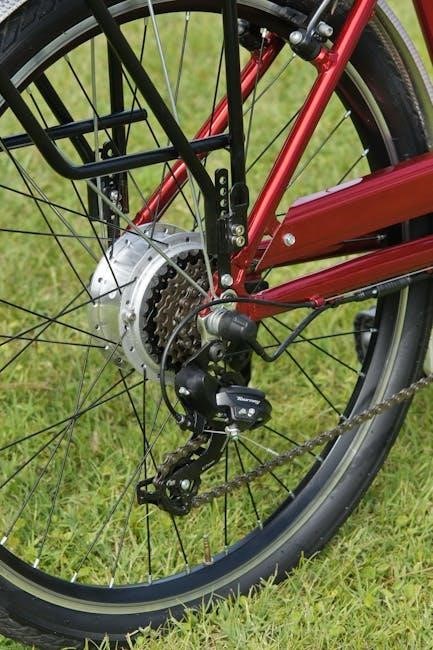
Policy and Legislative Framework
The BC Active Transportation Design Guide aligns with provincial policies promoting sustainable, healthy, and inclusive transportation options, supported by regulatory frameworks and funding initiatives.
Provincial Policies Supporting Active Transportation
The BC Active Transportation Design Guide aligns with provincial policies aimed at promoting walking, cycling, and rolling for healthier, more sustainable communities. The British Columbia government has committed to significant funding increases for active transportation infrastructure, reflecting its dedication to reducing carbon emissions and enhancing mobility. These policies emphasize the importance of integrated, multi-modal transportation systems that prioritize safety, accessibility, and environmental sustainability. They also encourage community engagement and inclusive design practices to ensure equitable access for all users.
Regulatory Requirements and Standards
The BC Active Transportation Design Guide establishes regulatory requirements and standards for designing safe and accessible infrastructure. It incorporates engineering principles and best practices from municipal, provincial, national, and international levels to ensure consistency and universal access. The guide aligns with provincial and federal laws, such as the Environmental Management Act and the Canadian Standards Association guidelines.
Key standards include specifications for pedestrian crossings, cycling facilities, and multi-use paths, ensuring compliance with accessibility and safety regulations. These standards promote sustainable and equitable transportation solutions across British Columbia.
Funding Opportunities and Grants
The BC Active Transportation Design Guide highlights various funding opportunities and grants to support infrastructure development. Provincial and federal programs provide financial assistance for projects that enhance walking, cycling, and multi-use pathways. For example, the Active Transportation Infrastructure Funding Program offers grants to local governments for building safe and accessible facilities. Additionally, federal investments through initiatives like the CleanBC Go Electric Program help fund sustainable transportation projects, ensuring communities can implement the guide’s recommendations effectively.
Grants are often targeted at improving connectivity, safety, and accessibility, with a focus on equity and environmental benefits. These funding opportunities enable municipalities to prioritize active transportation and create healthier, more sustainable communities across British Columbia.
Updates and Supplements to the Guide
The BC Active Transportation Design Guide is regularly updated with new supplements, such as transit-oriented development integration and bus stop design near cycling infrastructure.
Recent revisions also address emerging trends, ensuring the guide remains a cutting-edge resource for designing modern active transportation systems in British Columbia.
Recent Revisions and Additions to the Design Guide
The BC Active Transportation Design Guide has undergone significant updates, including new supplements on transit-oriented development and bus stop design near cycling infrastructure.
Recent revisions incorporate emerging trends, such as enhanced accessibility standards and innovative design principles for multi-modal transportation systems.
These updates reflect feedback from stakeholders and align with provincial initiatives to promote sustainable and inclusive transportation networks across British Columbia.
Supplement on Transit-Oriented Development
The supplement on Transit-Oriented Development (TOD) integrates active transportation with public transit hubs, fostering walkable, bikeable communities around transit stations.
It provides design principles for mixed-use development, pedestrian-friendly spaces, and cycling infrastructure near transit, enhancing accessibility and reducing reliance on personal vehicles.
This addition supports BC’s goal of creating compact, sustainable urban centers with seamless connections between transportation modes and land use.
Emerging Trends and Innovations in Active Transportation
Emerging trends in active transportation include the integration of smart technologies, electric bicycles, and autonomous vehicles to enhance safety and efficiency.
Innovative designs, such as dynamic traffic management and real-time wayfinding systems, are being explored to improve user experiences.
The guide highlights the importance of adapting to new technologies while prioritizing sustainability and inclusivity in transportation infrastructure.
These advancements aim to create seamless, multimodal systems that support walking, cycling, and public transit, fostering healthier and more connected communities.
Training and Resources
The guide offers workshops, online tools, and resources to help professionals implement active transportation designs effectively.
Workshops and Training Programs Available
Workshops and training programs are available to provide professionals with hands-on learning opportunities. These sessions, hosted by organizations like Urban Systems, cover key aspects of the Design Guide, including planning, design, and implementation. Participants engage in presentations, case studies, and interactive exercises to gain practical knowledge. These programs aim to equip professionals with the skills to create safe, accessible, and sustainable active transportation infrastructure, aligning with British Columbia’s transportation goals and best practices.
Online Resources and Tools for Design Professionals
Design professionals can access online resources, including the BC Active Transportation Design Guide’s downloadable chapters and supplementary materials. The guide is available in PDF format for easy reference, with updates and revisions posted regularly. Additional tools such as wayfinding signage generators and design templates support implementation. These resources ensure consistency, accessibility, and alignment with best practices, aiding professionals in creating safe and sustainable active transportation infrastructure across British Columbia.
Best Practices for Continuous Professional Development
Design professionals should engage in workshops, training programs, and stay updated on emerging trends through resources like the BC Active Transportation Design Guide. Participating in case studies and community feedback sessions enhances practical knowledge. Regular reviews of design standards and best practices ensure alignment with universal access and sustainability goals. Continuous learning fosters innovative solutions, enabling professionals to create safe, equitable, and environmentally conscious active transportation infrastructure effectively.
Leave a Reply
You must be logged in to post a comment.